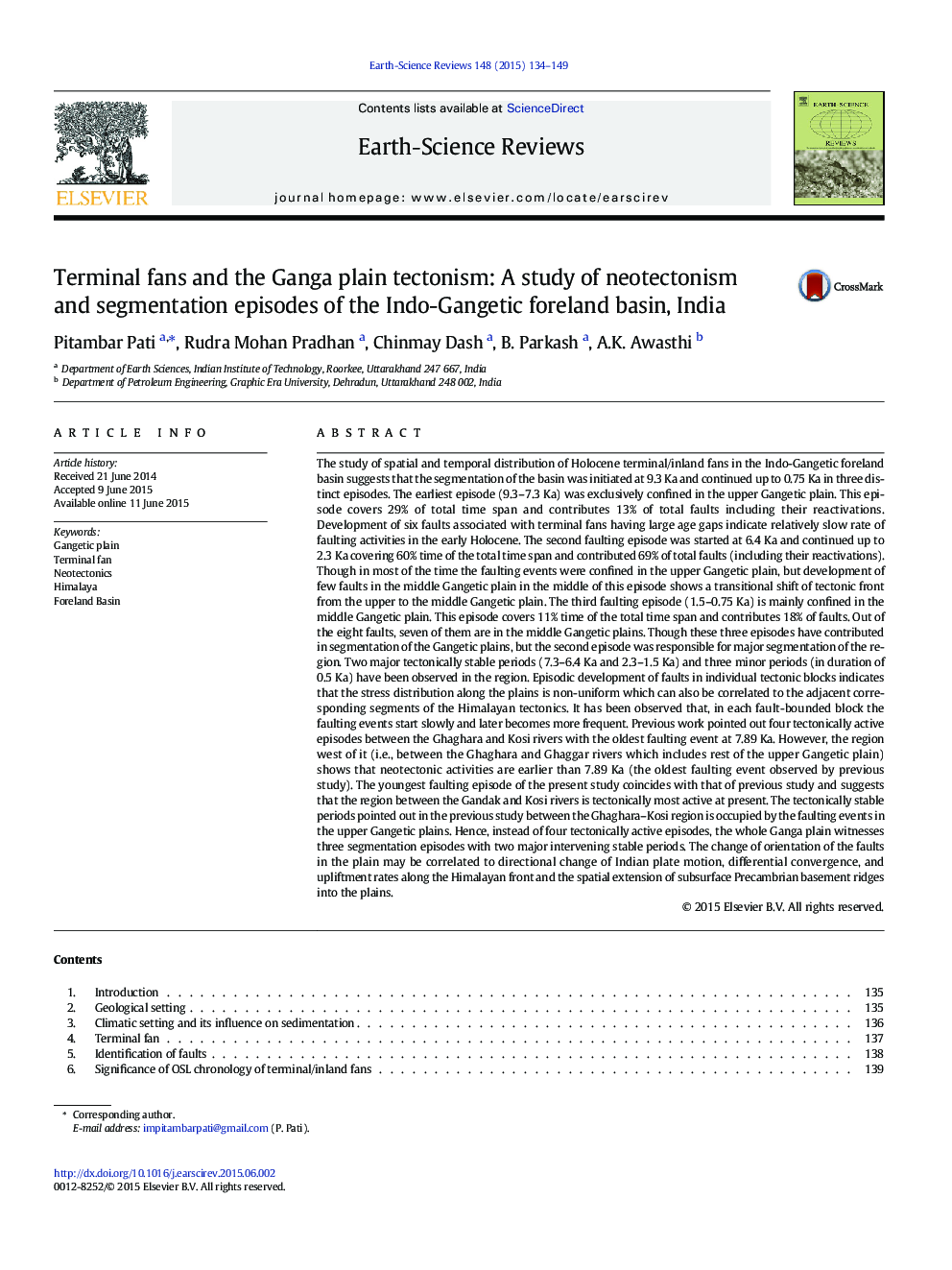| کد مقاله | کد نشریه | سال انتشار | مقاله انگلیسی | نسخه تمام متن |
|---|---|---|---|---|
| 4725648 | 1639954 | 2015 | 16 صفحه PDF | دانلود رایگان |

The study of spatial and temporal distribution of Holocene terminal/inland fans in the Indo-Gangetic foreland basin suggests that the segmentation of the basin was initiated at 9.3 Ka and continued up to 0.75 Ka in three distinct episodes. The earliest episode (9.3–7.3 Ka) was exclusively confined in the upper Gangetic plain. This episode covers 29% of total time span and contributes 13% of total faults including their reactivations. Development of six faults associated with terminal fans having large age gaps indicate relatively slow rate of faulting activities in the early Holocene. The second faulting episode was started at 6.4 Ka and continued up to 2.3 Ka covering 60% time of the total time span and contributed 69% of total faults (including their reactivations). Though in most of the time the faulting events were confined in the upper Gangetic plain, but development of few faults in the middle Gangetic plain in the middle of this episode shows a transitional shift of tectonic front from the upper to the middle Gangetic plain. The third faulting episode (1.5–0.75 Ka) is mainly confined in the middle Gangetic plain. This episode covers 11% time of the total time span and contributes 18% of faults. Out of the eight faults, seven of them are in the middle Gangetic plains. Though these three episodes have contributed in segmentation of the Gangetic plains, but the second episode was responsible for major segmentation of the region. Two major tectonically stable periods (7.3–6.4 Ka and 2.3–1.5 Ka) and three minor periods (in duration of 0.5 Ka) have been observed in the region. Episodic development of faults in individual tectonic blocks indicates that the stress distribution along the plains is non-uniform which can also be correlated to the adjacent corresponding segments of the Himalayan tectonics. It has been observed that, in each fault-bounded block the faulting events start slowly and later becomes more frequent. Previous work pointed out four tectonically active episodes between the Ghaghara and Kosi rivers with the oldest faulting event at 7.89 Ka. However, the region west of it (i.e., between the Ghaghara and Ghaggar rivers which includes rest of the upper Gangetic plain) shows that neotectonic activities are earlier than 7.89 Ka (the oldest faulting event observed by previous study). The youngest faulting episode of the present study coincides with that of previous study and suggests that the region between the Gandak and Kosi rivers is tectonically most active at present. The tectonically stable periods pointed out in the previous study between the Ghaghara–Kosi region is occupied by the faulting events in the upper Gangetic plains. Hence, instead of four tectonically active episodes, the whole Ganga plain witnesses three segmentation episodes with two major intervening stable periods. The change of orientation of the faults in the plain may be correlated to directional change of Indian plate motion, differential convergence, and upliftment rates along the Himalayan front and the spatial extension of subsurface Precambrian basement ridges into the plains.
Journal: Earth-Science Reviews - Volume 148, September 2015, Pages 134–149